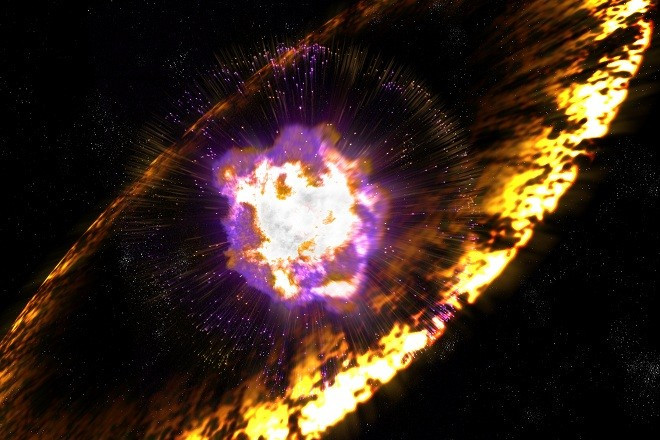Astrophysicists say mysterious cosmic rays hitting Earth started beyond our galaxy the Milky Way
Researchers at Pierre Auger Observatory found that the high-energy particles are extragalactic.
Scientists have taken a giant leap towards unlocking the secrets of the universe after settling a 50-year-old debate about where strange beams of deep-space energy have come from. Cosmic rays are high-energy radiation that hold the key to the origins of the planets and ultimately ourselves.
They are not really rays but high-energy particles that fly through space and hit Earth's atmosphere. They are the stripped-back nuclei of elements from hydrogen to iron, and how they are formed and where they come from has been something of a mystery – until now.
"The nitrogen in our DNA, the calcium in our teeth, the iron in our blood, the carbon in our apple pies were made in the interiors of collapsing stars. We are made of starstuff," Astronomer Carl Sagan famously said.
Now a team of 400 scientists from 18 countries have moved humankind a step closer to understanding our place in the universe. And their findings point beyond our own galaxy.
At the Pierre Auger Observatory, the team determined that the highest energy cosmic rays hitting Earth's atmosphere actually come from outside the milky way. The extragalactic origin of cosmic rays opens up the tantalising possibility that there is life in the next galaxy.
"We are now considerably closer to solving the mystery of where and how these extraordinary particles are created, a question of great interest to astrophysicists," says Karl-Heinz Kampert, spokesperson for the Auger Collaboration.
"There have been other pieces of evidence, but I would say this paper really confirms that most of the highest energy cosmic ray particles are not coming from the Milky Way galaxy," said Gregory Snow, the outreach director for the Pierre Auger Observatory.
"By understanding the origins of these particles, we hope to understand more about the origin of the universe, the Big Bang, how galaxies and black holes formed and things like that," he added. "These are some of the most important questions in astrophysics."
"The particles we detected are so energetic they have to come from astrophysical phenomena that are extremely violent. Some galaxies have an explosive, massive black hole in their centres and there are theories that these very violent centres accelerate particles of very high energy that eventually reach Earth."

© Copyright IBTimes 2025. All rights reserved.




















